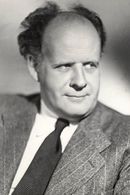Sergei Eisenstein, the renowned filmmaker, was born into a family of means, his father being a prominent architect. As a young man, he enrolled at the Institute of Civil Engineering in Petrograd, where he would lay the foundation for his future endeavors.
With the Russian Revolution in full swing, Eisenstein's life took a dramatic turn. In 1917, the fall of the tsar led to his employment as an engineer for the Red Army. This marked the beginning of his journey as a filmmaker, as he soon joined the Moscow Proletkult Theater as a set designer and eventually, a director.
Under the guidance of the influential Vsevolod Meyerhold, Eisenstein was introduced to the concept of biomechanics, or conditioned spontaneity. This theoretical framework would shape his approach to filmmaking, as he sought to create a unique style that blended the emotional impact of individual images with the intellectual depth of symbolism and metaphor.
Eisenstein's innovative technique, which he termed "montage of attractions," involved the strategic sequencing of images to create a total emotional effect that exceeded the sum of its parts. He believed that this style of editing was akin to Marx's dialectic, in that it allowed for the creation of abstract concepts through concrete images.
Despite his desire to create films that resonated with the common man, Eisenstein's use of complex symbolism and metaphor often proved challenging for his audience. Nevertheless, his legacy as a filmmaker and theorist has had a profound impact on the development of cinematic language.
Throughout his career, Eisenstein directed only seven films, yet his influence on the medium was profound. He demonstrated that film could transcend its 19th-century predecessors, such as Victorian theatre, by harnessing the power of abstract concepts and concrete images.
































